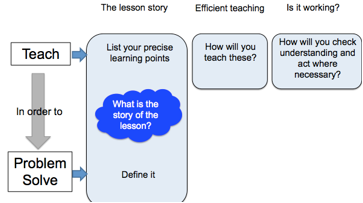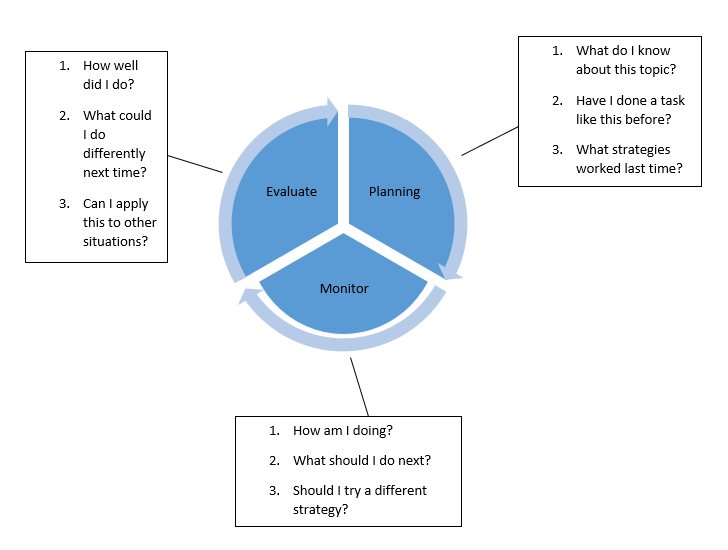May 2019 Blog
My thanks this month go to Sean Russell, who has written a fascinating blog. Please read the article and any comments/feedback would be gratefully received. Over to you Sean...
Whilst many of the points I am going to discuss are linked to the way we teach science at Crookhorn, I see many ways in which they have cross-curricular implications. Before I discuss these ideas I want to make a few points about what we are all likely to have in common within our subject areas;
- Ideas can be abstract and difficult to understand.
- Students have to remember these abstract key ideas/knowledge for a long time... (KS3 à GCSE)
- Many GCSE marks are for the application of understood ideas. We must be imparting these skills early from year 7 onwards.
- There is a lot of ideas to remember and apply, we must build the skills needed to address this but also the resilience in individual learners.
- All students have to be able to deal flexibly and adaptively with these issues.
The model we have adopted and adapted this year in science I call the ‘precise learning model’. I am implementing this model because I believe it will help address the points discussed above.
It follows the formula below;
- What do the students need to be able to do/understand to be successful in this lesson? What are the key bits of knowledge they need to have secure in their minds? What precisely is it that they need to get?
- What prior learning do they have/ do they need in order to attempt this lesson? I need to check they have this foundation before introducing new knowledge.
- How am I going to teach them this new knowledge? How can I do this and build resilience?
- How am I going to check they “get it?” If they don’t what intervention/reteach will I introduce to ensure all students access the precise learning points for my lesson?
- How will they then apply this information to a new possibly unfamiliar situation? I need them to solve problems in their final exams, therefore, I need to teach them in a way that makes them a good problem solver.
Below is a diagram we use to summarise this model in science.

I have found that teaching this way has two main benefits:
- It gives their learning a purpose that is obvious to them.
- Provides opportunities for learning to become embedded and remembered.
The part about embedding and remembering is so important. We need ideas to be understood and remembered well enough to be able to build upon them later. So our teaching has to be carefully planned around them understanding key ideas.
But we must plan activities that are designed to support memory. (on top of the interleaving stuff we are all probably doing anyway).
In Summary, I think we need to be really clear about the difference and relationship between ‘teaching’ and ‘problem-solving’. When this becomes clear, and like second nature this model becomes efficient at achieving the outcomes mentioned above.
I found the following information online very recently so from here the writing is no longer my own. I think this article has links to what we are doing currently in the science department and other interesting information, which as you will see has implications for anyone in their classroom.
I would suggest reading the article multiple times. As you will see this is one way to maximise the movement of new information from short term to long term memory. There is no known limit to the amount of information the human brain is capable of storing. However, this is only true of information that is held in our long term memory. Therefore, it is a matter of use/reuse it or lose it!
A sensory stimulus leads to chemical and electrical changes in the brain; these are the basic memory traces in our short term working memory. Cognitive Load Theory suggests there is a limit to the number of these traces that can exist at any one time in my working memory. Whilst by no means certain and there is variability between people; about 4-7 memory traces can be held in the short term working memory at any one time. However, the size of each of these traces/memories can vary from small to huge; it still counts as just one. This will be important to remember when we look at elaboration and generation later on. These memory traces soon disappear unless transferred from the working memory into the long term memory
Implication 1
When teaching directly, don’t overload pupils’ limited working memory with “extraneous” information. Keep the instructions and information focussed particularly when pupils are meeting new material. This requires discipline from the teacher and careful thought about what information is needed, in what order.
The transfer to long term memory involves stabilising the traces by organising them and linking them to associated information, already known. This is the start of building up a mental model or schema. Once learnt the information is pretty much permanently stored in our long term memory; storage strength is strong.
Implication 2
As new knowledge needs to be connected to prior knowledge, the order of teaching information must be very carefully sequenced. Planning the sequential development of knowledge, the learning flow, is the critical first step in planning a series of lessons or scheme of learning. If the sequential development of knowledge wasn’t important to supporting learning we could literally look at what pupils need to know or be able to do and teach the constituent components in any random order we like.
The real problem we have is often retrieving the information and bringing it back into our short term working memory; retrieval strength is weak and it takes time and effort to build up the retrieval strength through memory cues. Once sufficiently strengthened these cues allow, almost without thinking, the recall pieces of information from long term memory; that is, automaticity. Part of learning, therefore, involves forgetting and then recalling. The more effort that is required in the recalling the greater the retrieval strength becomes.
Implication 3
We need to create opportunities for pupils to recall previously taught material, retrieval practice. The retrieval process could involve low stake testing/questioning. Start by retrieving the information taught in the lesson; a set of end of lesson multiple choice questions on the key information (quick and efficient but not requiring a great amount of effort to retrieve as the answer is one of the options provided) or a series of short response answers (require more effort as the pupils must use only their own memory cues) can be used. The correct answers should then be given and pupils mark their own work. This brings in the hypercorrection effect; pupils remember the corrected answer for longer than if they had guessed correctly in the first place. Retesting a day, week, month or months later keeps improving the retrieval strength.
Once recalled or retrieved the memory is now pliable; we can now reform it and add in additional knowledge which will deepen our understanding. In SOLO Taxonomy terms, the pupil is moving from multi-structural (lots of pieces of information) to the relational (the pieces connected together coherently) the to the extended abstract ( a more holistic understanding based on underlying principles or rules).
Implication 4
We need to develop a spiral style curriculum where pupils are able to revisit key ideas over time; spaced learning. On each of these occasions, teachers should require pupils to retrieve prior learning with the minimal number of external cues possible. There is then the opportunity to develop an iterative process where pupils can expand the mental model/schema/understanding of a particular area of the curriculum or life, in general.
Finally, we need to own the knowledge; the deepest test of understanding. Can we coherently and correctly apply our learning to explain a particular phenomenon?
Implication 5
Periodically you should ask students to write a paragraph or two in response to a question that will test their new learning. Why can seagulls dive through the surface of water but not ice given both consists of H2O particles?
The last part here is an example of how we might use application in order to problem solve, as I mentioned earlier.
Thanks for reading, now go and apply what you have learned.
Sean


